Complete Takachiho Gorge GuideEtiquette & Spots to 120% Enjoy the Land of Myths and Mystic Valley
Table of Contents
Welcome to Takachiho, the Land Where the Gods Descended
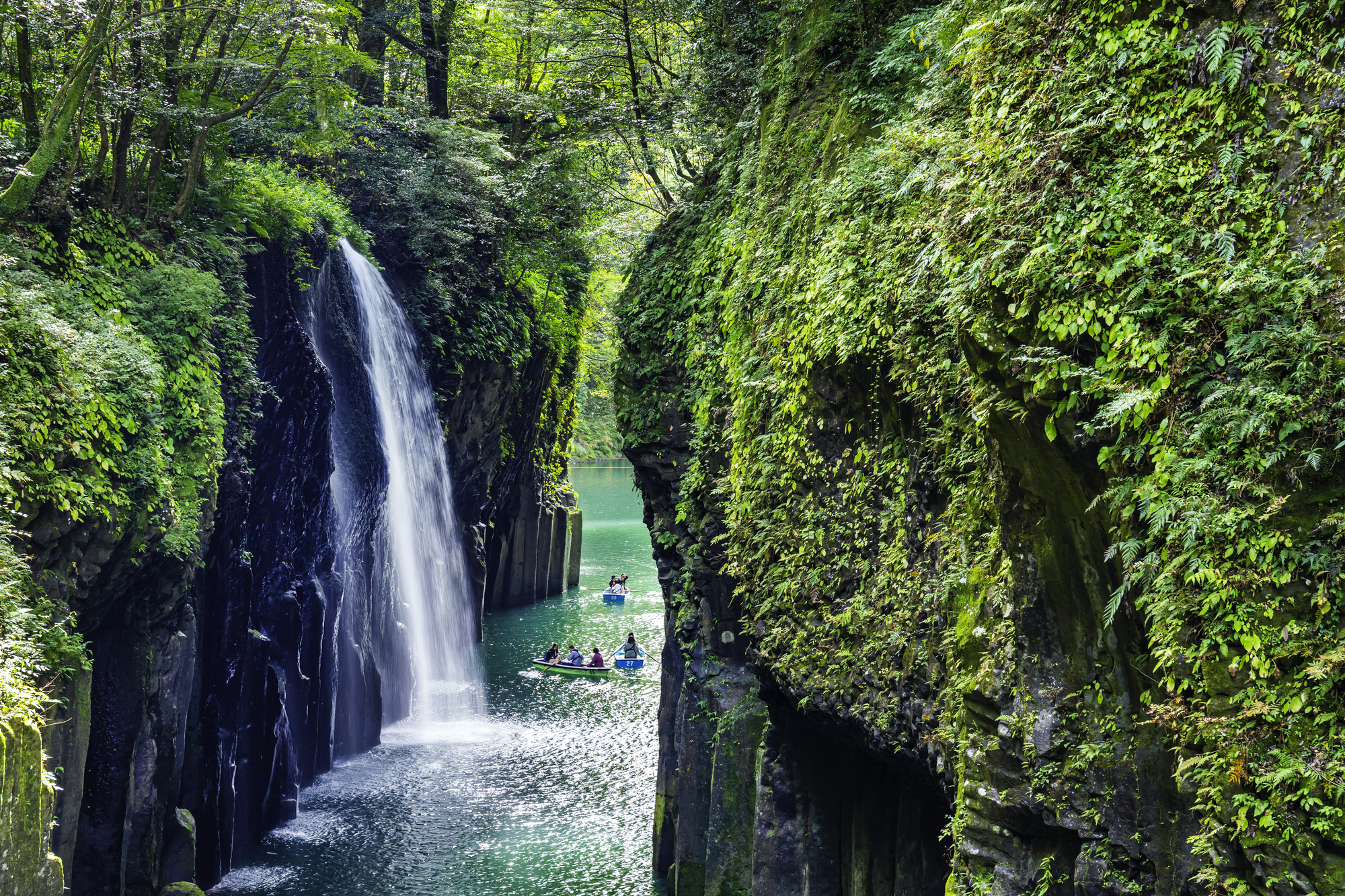
Takachiho, a land of mystery and spectacular views where Japanese mythology comes to life. Deep in the mountains of Kyushu, the beauty of the gorge, created by nature over eons, captivates the hearts of all who visit. Cliffs of columnar basalt, formed by the volcanic activity of Mount Aso, line the emerald green Gokase River as it flows peacefully. The sight of Manai Falls, selected as one of Japan's top 100 waterfalls, splashing down is nothing short of divine.
This guide does more than just introduce the breathtaking beauty of Takachiho Gorge. It aims to help you deeply understand that this land is the main stage of Japan's creation myths and a sacred place where deities, including the sun goddess Amaterasu Omikami, reside, and to acquire the appropriate respect and etiquette as a visitor. It provides detailed explanations of specific points that international visitors should know, such as how to use the rental boats—a highlight of Takachiho tourism—and how to behave in sacred places.
The impressive cliffs viewed from a boat, the solemn atmosphere of a shrine where Yokagura is performed, and the mystery of Amano Iwato, the stage of myths. All of these offer a precious experience to touch the origins of Japanese spiritual culture. Now, let's listen to the stories of the gods and embrace a sense of awe for nature on a special journey to Takachiho.
1.The Myth of Tenson Korin: The History and Culture of Takachiho
The unparalleled charm of Takachiho is deeply connected to the myths recorded in the "Kojiki" and "Nihon Shoki," which narrate the origins of Japan.
1-1. The Birthplace of Japanese Mythology: The Legend of Amano Iwato
Takachiho is known as the land of "Tenson Korin," where the gods, considered the ancestors of the Japanese Imperial family, descended from the heavens. Among the legends, the "Amano Iwato" (Cave of Heaven) legend is particularly famous.
The sun goddess, Amaterasu Omikami, angered by the violent behavior of her brother Susanoo-no-Mikoto, hid herself in a cave called Amano Iwato, plunging the world into darkness. The eight million gods, at a loss, gathered at Amano Yasugawara to consult. They held a banquet in front of the cave, where the goddess Ame-no-Uzume-no-Mikoto performed a lively dance. Curious about the merriment, Amaterasu Omikami opened the cave door slightly. At that moment, the powerful god Ame-no-Tajikarao-no-Mikoto forced the door open, and light returned to the world. The Amano Iwato Shrine and Amano Yasugawara, believed to be the stage for this legend, are considered among the most sacred places in Takachiho.
1-2. A Dance of Prayer to the Gods: The Tradition of Yokagura
The ancient tradition of Takachiho's Yokagura is said to have originated from the dance of the gods in the Amano Iwato legend. This is a Shinto ritual held from mid-November to February each year, where the guardian deity of each village is invited into a private home or community center, and thirty-three Kagura dances are dedicated throughout the night. It is designated as a National Important Intangible Folk Cultural Property and embodies the devout faith of the local people praying for a good harvest and good health. Tourists can get a glimpse into the world of myth by watching a digest version (Tourist Kagura) performed nightly at Takachiho Shrine.
1-3. [2025 Latest] Introduction of a Reservation System and Sustainable Tourism
![1-3. [2025 Latest] Introduction of a Reservation System and Sustainable Tourism](/library/689c2e896e58203ab69c5bd3/68c271737906bf43da1669e9.jpg)
The rental boats, the main attraction of Takachiho Gorge, used to be a major challenge due to long waiting times. However, in recent years, a complete online reservation system has been introduced, allowing visitors to book a specific time in advance. This has significantly reduced on-site waiting times and enabled more planned tourism.
On certain days, same-day tickets may be available on-site, but the number is limited, and you’ll need to line up early in the morning. This system change is an important initiative to prevent over-tourism, enhance the quality of each visitor's experience, and at the same time, protect the natural environment of the gorge. When you visit, it is required that you check the latest reservation status on the official website and enjoy your time following the rules.
2.Travel Preparation and Basic Information: The First Step to a Smart Journey
2-1. Access from Major Cities (Bus/Car)
As Takachiho is located in the center of the Kyushu mountains, there are no train stations. Access is primarily by bus or car, making advance planning very important.
- Highway/Local Bus: From Fukuoka: Take the "Gokase-go" highway bus from Hakata Bus Terminal to Takachiho Bus Center (approx. 3.5 hours). From Kumamoto: Take the "Takachiho-go" express bus from Kumamoto Station/Kumamoto Sakuramachi Bus Terminal to Takachiho Bus Center (approx. 3 hours).
- Rental Car: Features: Offers the most freedom and allows you to efficiently visit not only Takachiho Gorge but also more distant spots like Amano Iwato Shrine. It is common to rent a car at Aso Kumamoto Airport, Miyazaki Bougainvillea Airport, or around Kumamoto or Nobeoka stations. Note: The area around Takachiho has many mountain roads with narrow sections and continuous curves. If you are not used to driving in such conditions, consider a bus tour instead.
2-2. Getting Around Takachiho: Planned Movement is Key
- On Foot: Takachiho Gorge is about a 30-40 minute walk (approximately 2 km) from the Takachiho Bus Center. Takachiho Shrine is also within walking distance.
- Local Bus (Fureai Bus): A community bus runs from the Takachiho Bus Center to areas like Amano Iwato Shrine, but the service is very infrequent (about one bus every 1-2 hours). If you plan to use it, you must thoroughly check the timetable in advance and be careful not to miss your bus.
- Taxi: Convenient if you want to travel without worrying about bus times, but the number of taxis is limited. It's best to book in advance, especially on weekends, or arrange one at the bus center.
2-3. The Most Crucial Point "Rental Boats": Reservation-Only and Precautions
The rental boats at Takachiho Gorge are the most critical element that can make or break your trip.
- Complete Online Reservation System: Boat tickets must be booked and paid for in advance online via the official website. Same-day tickets are not sold on-site. Reservations open one week in advance and often sell out quickly, especially on weekends and holidays. It is recommended to book as soon as your travel dates are decided.
- Cancellation Due to Weather: For safety reasons, boat operations may be suspended without notice due to weather conditions such as high water levels from heavy rain or strong winds. In case of cancellation, you will be notified through the reservation site, and your fee will be refunded. Be sure to check the operating status on the official website on the day of your visit.
- Be Punctual: If you are late for your reserved time slot, your reservation may be canceled, and you may not be able to board. Please head to the reception area with plenty of time to spare.
3.[By Area] Popular Tourist Spots and Etiquette to Know
3-1. Takachiho Gorge Area: Manners for Rental Boats and the Promenade
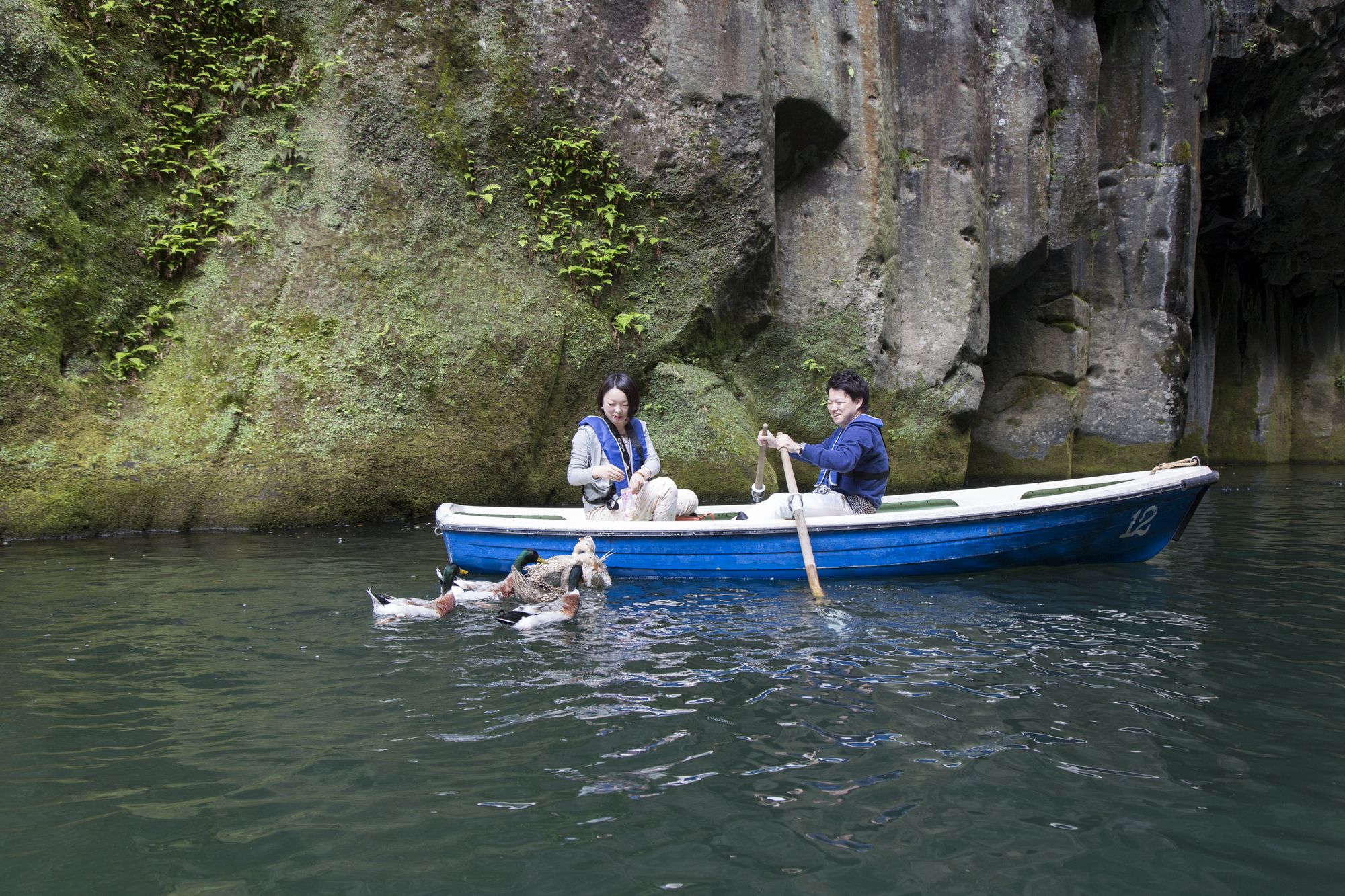
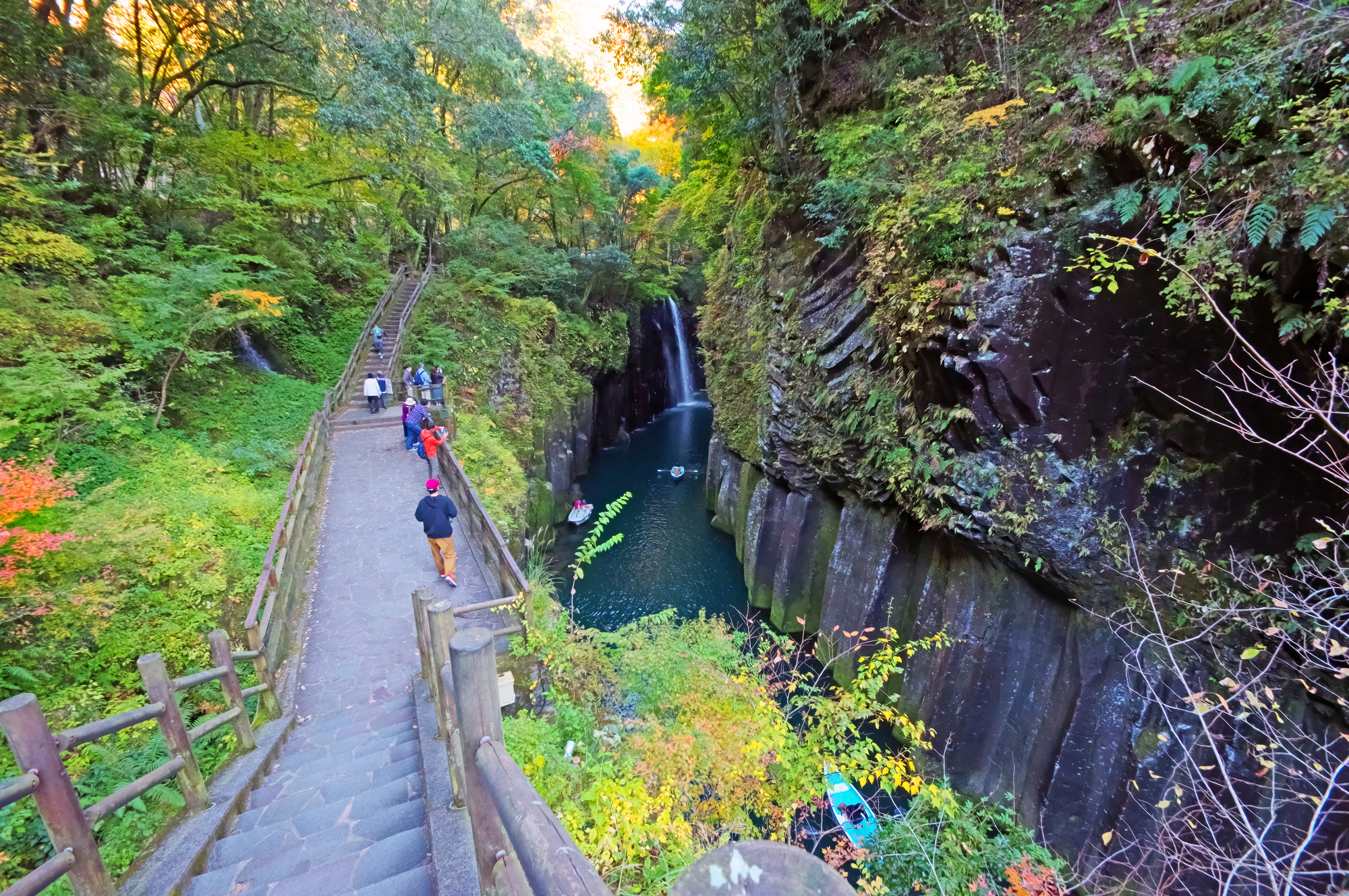
Rental Boat Rules:
- Safety First: Always wear a life jacket and do not stand up or fool around in the boat.
- Distance from the Waterfall: Getting too close to Manai Falls can be dangerous and may capsize the boat. Always maintain a safe distance and do not try to go under the waterfall as if performing a ritual.
- Be on Time: The rental period is 30 minutes. Please return to the dock on time for the sake of other waiting visitors.
Promenade Etiquette:
- Respect One-Way Paths: Some parts of the promenade may be designated as one-way to ease congestion. Please follow the local signs.
- Yield to Others: In narrow areas, yield to oncoming people. Be especially careful not to block the path while being absorbed in taking photos.
- Beware of Falling Rocks: The gorge is a natural environment. The possibility of falling rocks from the cliffs is not zero. Avoid standing directly under the cliffs for long periods.
3-2. Amano Iwato Shrine & Amano Yasugawara Area: Conduct in a Sacred Precinct
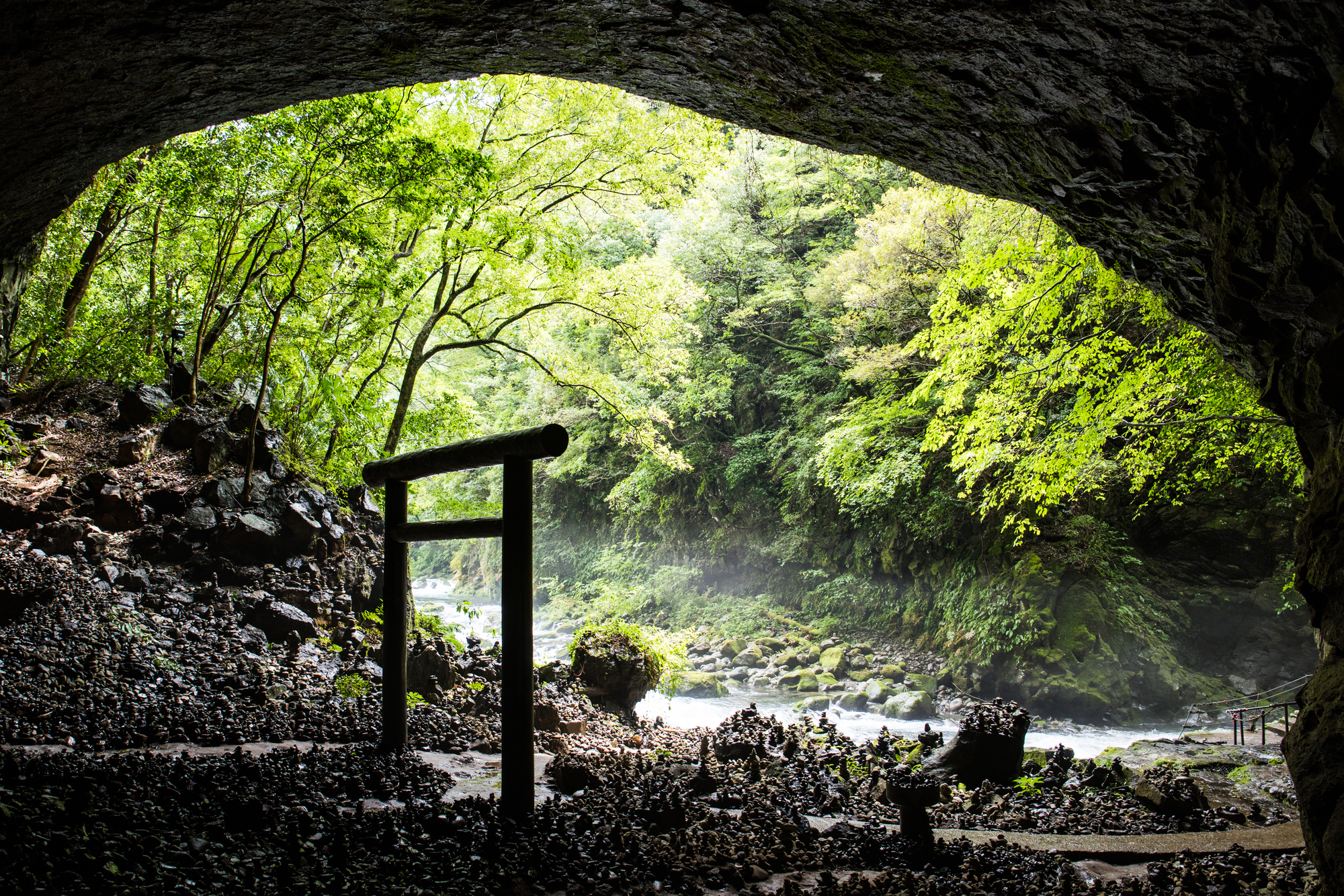
This is one of the most important places in Japanese mythology. Please visit with a solemn heart.
Etiquette at Amano Iwato Shrine: There are two shrines, the West and East Hongu, both of which are sacred places. Please be quiet within the precincts and refrain from loud conversations. The "Amano Iwato" cave where Amaterasu Omikami is said to have hidden is behind the West Hongu and cannot be seen directly, but you can view it from a distance from a worship hall by joining a guided tour led by a priest (free of charge, application required).
Mindset at Amano Yasugawara: This is a large cave located about a 10-minute walk along the river from Amano Iwato Shrine. It is said to be the place where the eight million gods gathered to consult, and the countless stone stacks create a mystical atmosphere. These stacks represent the prayers of visitors. Avoid disturbing the existing stone stacks or carelessly making new ones. The proper etiquette is to quietly feel the atmosphere of the place and offer a prayer in your heart.
3-3. Takachiho Shrine Area: Mindset for Watching Yokagura
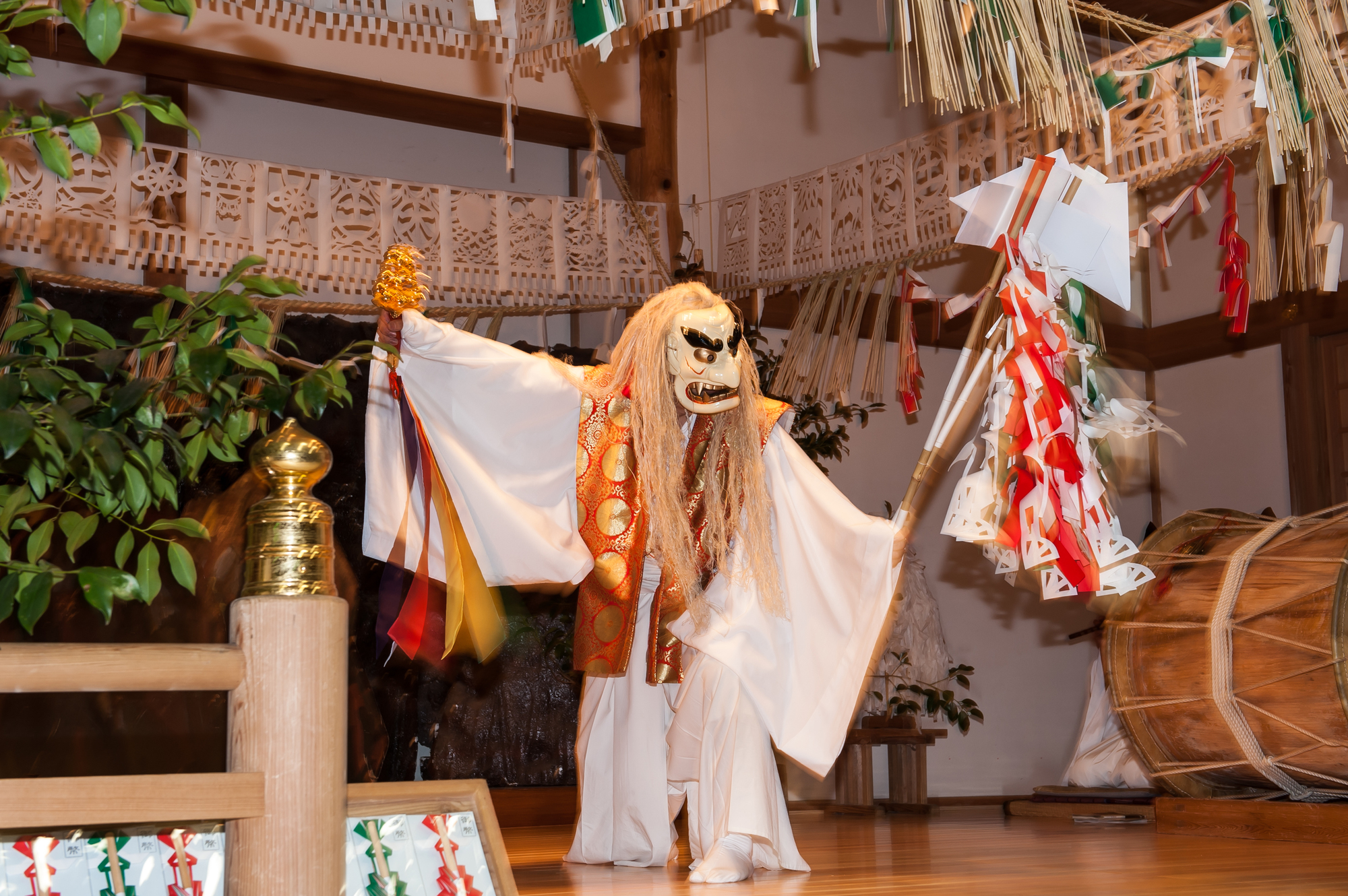
Every night from 8 PM in the Kagura-den hall of Takachiho Shrine, four representative dances from the thirty-three Yokagura dances are performed as "Tourist Kagura."
Awareness of it Being a Ritual: This is not just a show but a sacred dance dedicated to the gods. During the performance, please refrain from talking and show respect to the performers.
Photography Manners: Photography is allowed, but the use of flash is strictly prohibited. The flash spoils the sacred atmosphere of the dance and disturbs the performers' concentration. Also, be mindful of your shutter sound and avoid disturbing other viewers.
4.The Essentials! A Themed Guide to Manners for Enjoying Takachiho
4-1. Protection of Natural Scenery: Awareness as a National Park
The Takachiho Gorge area is part of the Sobo-Katamuki Quasi-National Park.
- Take Your Trash Home: To protect the beautiful nature, never litter and take all your trash with you.
- Protection of Flora and Fauna: Do not pick the plants along the promenade or catch the creatures in the river.
- Drones are Prohibited: Flying drones in Takachiho Gorge is generally prohibited for safety and landscape protection.
4-2. Basic Etiquette for Shrine Worship
- Bow Before the Torii: Stop and bow lightly before passing through the torii gate, the entrance to a shrine.
- Purification at the Chozuya: Cleanse your hands and mouth before praying. Hold the ladle with your right hand to wash your left, then with your left hand to wash your right. Hold it again with your right hand, pour water into your left palm to rinse your mouth, and finally, tilt the ladle to wash the handle.
- Two Bows, Two Claps, One Bow: At the main shrine, the basic custom is to bow deeply twice, clap your hands twice, and then bow deeply once more.
4-3. Dining & Shopping: Takachiho Beef and Kagura Goods
- Takachiho Beef: This brand-name beef can be enjoyed as steak or yakiniku at restaurants in town. Reservations are recommended for popular restaurants.
- Nagashi Somen: In summer, "Chiho no Ie," the original nagashi somen (flowing noodles) restaurant, is popular. You can experience a Japanese summer tradition, but please wait quietly in line.
- Souvenirs: Around Takachiho Shrine, you can find Kagura masks and related goods. These are not just souvenirs but items with sacred meaning. Please handle them with respect.
4-4. Transportation and Safety: Notes on Driving and Walking in the Mountains
- Driving: The mountain roads have many curves, and some areas have few streetlights at night. Please drive slowly and safely.
- Walking: Be careful of cars and buses when walking on promenades and roads. Especially at night, it is safer to use reflective gear to make yourself visible.
5.Planning Your Trip: Model Courses for Practicing Good Manners
5-1. [Day Trip] A Focused Course on Rental Boats and Gorge Walking!
- 10:00 AM: Arrive at Takachiho Bus Center.
- 10:30 AM: Head to Takachiho Gorge. Board a rental boat at your pre-booked time. Experience the power of Manai Falls up close.
- 11:30 AM: Stroll along the gorge promenade. See sights like Onokoro Island and the Stone of Kihachi's Strength.
- 1:00 PM: Have lunch of nagashi somen at the restaurant "Chiho no Ie" in the gorge.
- 2:30 PM: Take a bus or taxi to Takachiho Shrine. Receive spiritual energy by touching the Meoto-sugi (couple cedars) and the Shizume-ishi (calming stone).
- 4:00 PM: Return to Takachiho Bus Center and look for souvenirs.
- 5:00 PM: Depart by bus.
5-2. [1-Night, 2-Day] Immerse Yourself in the World of Myth! A Full Course with Yokagura Viewing
- Day 1: 1:00 PM: Arrive at Takachiho Bus Center. Drop off your luggage at your accommodation in town. 2:00 PM: Take a bus to Amano Iwato Shrine. After visiting the West Hongu, join the guided tour to the Amano Iwato worship hall. 3:30 PM: Walk the path along the river to the mystical Amano Yasugawara. 5:00 PM: Return to town by bus and check into your accommodation. 6:30 PM: Enjoy a dinner of Takachiho beef. 8:00 PM: Watch the Yokagura performance at Takachiho Shrine.
- Day 2: 9:00 AM: Head to Takachiho Gorge. Board your booked rental boat. 10:30 AM: Stroll along the promenade. 12:00 PM: Have lunch around the Takachiho Gamadase Market. 1:30 PM: Visit Kunimigaoka Hill to enjoy the spectacular view said to have been looked down upon by the gods (car or taxi recommended). 3:30 PM: Return to Takachiho Bus Center and head home.
The Echoing Melody of Myth
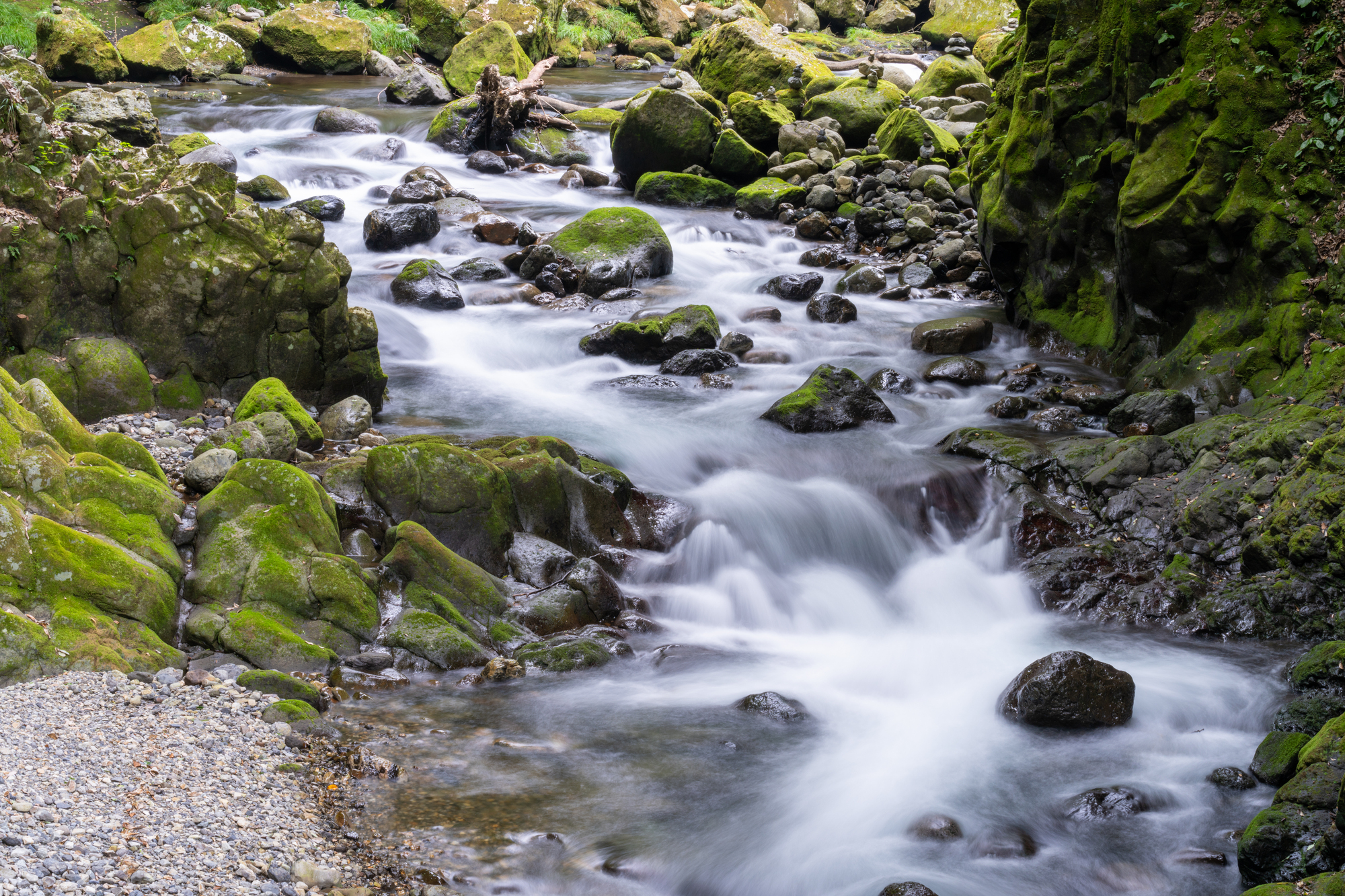
A trip to Takachiho is not just about being moved by beautiful natural scenery; it is also an inner journey to the source of Japanese spiritual culture. The etiquette and background knowledge introduced in this guide are signposts for showing respect to the land of myths. The sound of the water flowing through the gorge, the melody of the Kagura flute, and the silence of the forest where the gods are said to have roamed. It is our hope that the atmosphere of Takachiho, where all these elements are united, will resonate deeply and purely in your heart.

